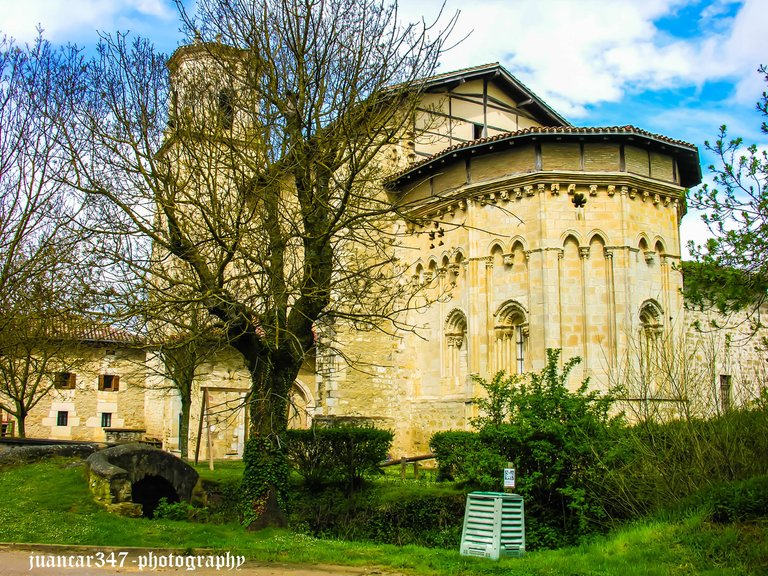[ENG-SPN] Añúa: Where Romanesque Farewells and Gothic Awakens / Añúa: Donde el Románico se despide y el Gótico despierta
In the central part of the Alava Plain and a small distance from the capital of Álava, the small town of Añúa, well known, however, to pilgrims who still continue to follow the so-called Basque Way to Santiago de Compostela, offers us, with that essential collection of dreams and architecture—which is, without a doubt, its ancient Church of the Nativity—the opportunity to delve into that fascinating cultural period, which, situated between the 12th and 13th centuries, marked the decline of one style and the birth of another, as surprising as it was disconcerting.
Having overcome the obsolescence of Romanesque architecture, considered, until then, the model that best represented the values of Christianity, the sudden emergence of Gothic architecture represented a true revolution in its era, to the point that even today, at this point in the century and in the midst of the Digital Age, it continues to be a focus of debate and discussion in academic circles.
With its appearance, the shadows of the Romanesque began to recede, being notably overcome when Gothic builders, as the father of German Romanticism, Goethe, masterfully believed, not only raised their gaze to seek God in the heavens, but also captured the beauty of light, filtering it through genuine stained-glass windows, treated with methods, possibly alchemical, that have not yet been reproduced with all modern advances.
En la parte central de la Llanada Alavesa y a una distancia insignificante de Álava capital, la pequeña población de Añúa, bien conocida, sin embargo, por los peregrinos que todavía en la actualidad continúan realizando el llamado Camino Vasco hacia Santiago de Compostela, nos ofrece, con ese imprescindible conjunto de sueños y arquitectura, que es, sin ninguna duda, su ancestral iglesia de la Natividad, la posibilidad de adentrarnos en ese apasionante periodo cultural, que, situado a lomos de los siglos XII y XIII, significó el ocaso de un estilo y el nacimiento de otro modelo, tan sorprendente como desconcertante.
Superadas, pues, las obsolescencias de la arquitectura románica, considerada, hasta entonces, como el modelo que mejor representaba los valores de la Cristiandad, la súbita aparición de la arquitectura gótica supuso una verdadera revolución en la época, hasta el punto de que todavía, a estas alturas de siglo y en pleno auge de la Era Digital, continúa siendo foco de debate y discusión en los ambientes académicos.
Con su aparición, las sombras del románico comenzaron a quedar atrás, siendo notablemente superadas cuando los constructores góticos, como pensaba magistralmente el padre del Romanticismo alemán, Goethe, no sólo elevaron su mirada para buscar a Dios en las alturas, sino, que, además, atraparon la belleza de la luz, tamizándola a través de unas genuinas vidrieras, tratadas con métodos, posiblemente alquímicos, que todavía no han podido ser reproducidos con todos los adelantos modernos.
NOTICE: Both the text and the accompanying photographs are my exclusive intellectual property and are therefore subject to my Copyright.
AVISO: Tanto el texto, como las fotografías que lo acompañan, son de mi exclusiva propiedad intelectual y por lo tanto, están sujetos a mis Derechos de Autor.








https://x.com/lee19389/status/1977114861441327298
#hive #posh